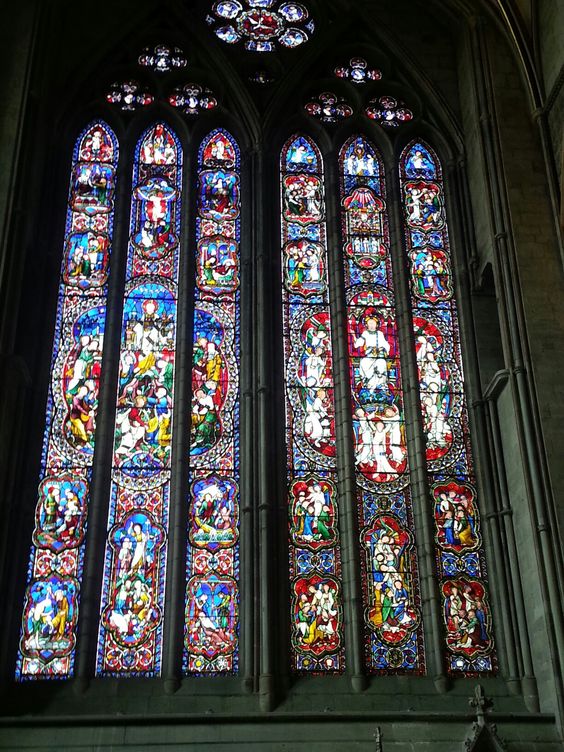Victorian Stained Glass- Skyla Investigates Part IV
Introduction
This month will be a little bit different to the others. I won’t be doing a comparison, I am simply researching how stained glass was made in the late Victorian era. And when I say simply, I mean quite the opposite. Although this has been an interesting topic to look into, finding a book about a related story has been nigh impossible. I will be including an example of two books where the topic is stained glass, one fiction and one non-fiction. I am researching this topic as it will be featuring in Book II of the Hecate Series. In The Haunting of Hecate Cavendish, Hereford Cathedral is a focal point with it’s gorgeous stained glass windows. Therefore, we must understand more about the history and creation procedure of how it was made.
Production
As cathedrals, abbeys and churches were built, they grew in size. This meant that the windows also became larger. A major reason that stained glass became so popular is not only because they are beautiful to look at, but also because they could be made very large as they were fused together with lead. Large sheets of different coloured glass could be fused together, so why not create smaller patterns within them? As the popularity of stained glass windows grew for religious purposes, art critics came out of the woodworks. John Ruskin was a critic that discussed the social and moral implications of religious buildings and their design. One of his main focuses was that there should be an ethical approach to the practice of these arts.
Originally, stained glass was made by combining potash, lime and sand. To create the array of different colours, various metallic oxides could be added to the mix. As time went on, new processes enabled craftsmen to create large sheets of glass with a surface layer of metallic oxide colours. These would next be melded together after being framed by lead.
The Glass Painters Daughter by Rachel Hore
This story focuses on a small stained-glass shop hidden amongst the cobbled backstreets of Westminster. After her father is alone and has fallen ill, Fran Morrison must return from far flung cities where she is pursuing a music career, to take her place in her father’s shop. Her father’s craftsman, Zac, and Fran take on an arduous commission. They must reassemble what turns out to be a Victorian love story within the image on the glass. The more she looks into the glass, the more she sees herself within the themes on the image. Her discovery leads her on a voyage of truth about the death of her mother.

Victorian Stained Glass by Trevor Yorke
This novel provides a deep dive into the production and craft behind stained glass throughout history. A main focus is the impact it had on English churches for the duration of the nineteenth century. A major point in this novel is bringing to light some of the crucial stained glass artists of the Victorian era such as William Morris, Charles Eamer Kempe and Augustus Welby Pugin. He discusses that stained glass was not only featured in religious settings but became more publicly used. He mentions that in the beginning of the twentieth century, it became popular for terraced town houses to have stained glass door panels or features on the windows.


Everyone can make money now a days very easily.I am a full time college student and just w0rking for 3 to 4 hrs a day. Everybody must try this home online job now by just use
.
This Following Website—–>>> Dailygooglework.blogspot.Com